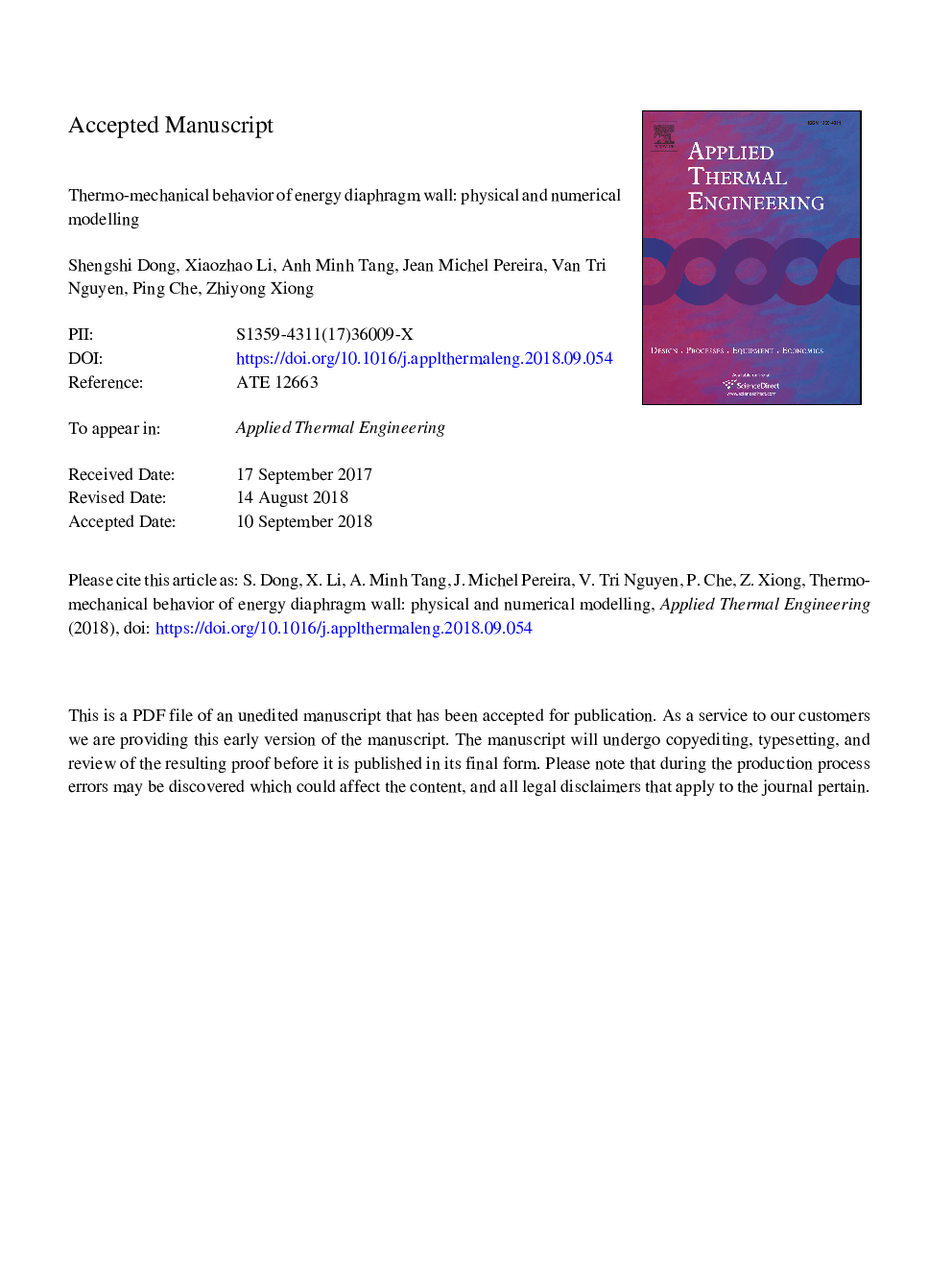| Article ID | Journal | Published Year | Pages | File Type |
|---|---|---|---|---|
| 11020818 | Applied Thermal Engineering | 2019 | 37 Pages |
Abstract
The paper presents a study of the thermo-mechanical behavior of energy diaphragm wall. A physical model, which consists of a small-scale concrete diaphragm wall equipped with a heating exchange pipe, was used. A heating test was performed where hot water (at 50â¯Â°C) was circulated through a heat exchange pipe for 75â¯h. The results show that the temperatures in the wall and in the soil increased quickly during the first 20â¯h and reached stabilization at the end of the experiment. The temperature increase induced increase of axial strain in the wall and earth pressure at the soil/wall interface. In addition to the experiment, a numerical model, using finite element analysis, was used to predict the behavior of the wall during this experiment. The good agreement between the numerical and the experimental results allows the main phenomena that took place to be explained; heating induces thermal expansion of the wall that results in the modification in stress in the wall and at the soil/wall interface. In addition, since the pipe was located closer to one side of the wall, the thermal expansion of the wall was not homogenous, and the wall bent during heating.
Related Topics
Physical Sciences and Engineering
Chemical Engineering
Fluid Flow and Transfer Processes
Authors
Shengshi Dong, Xiaozhao Li, Anh Minh Tang, Jean Michel Pereira, Van Tri Nguyen, Ping Che, Zhiyong Xiong,
